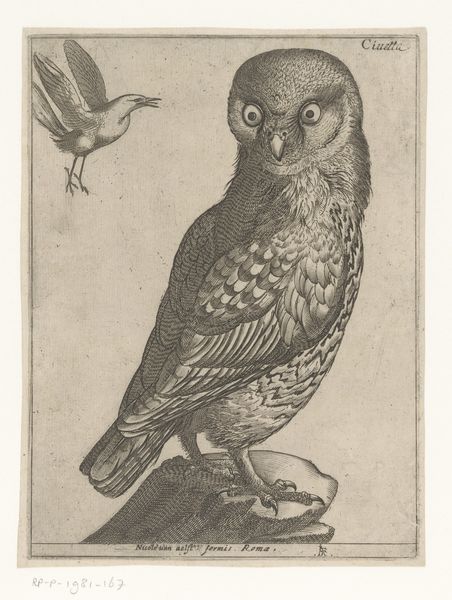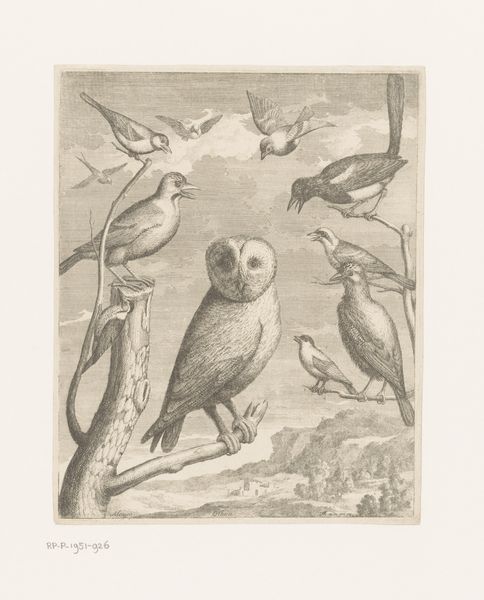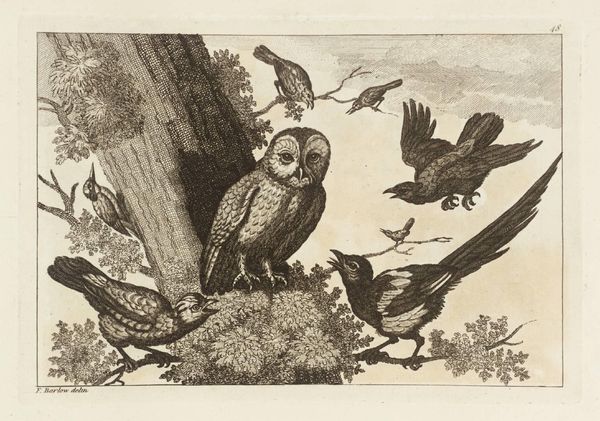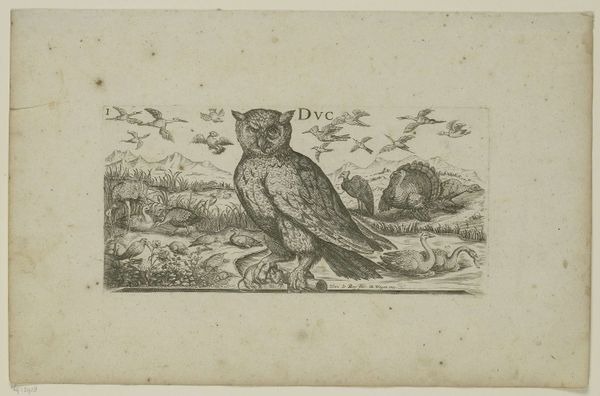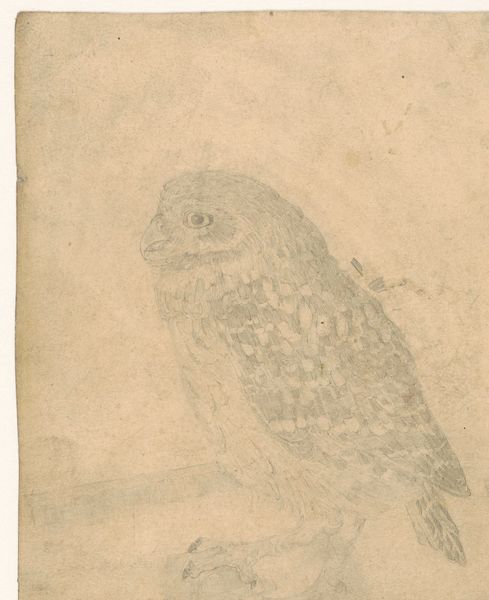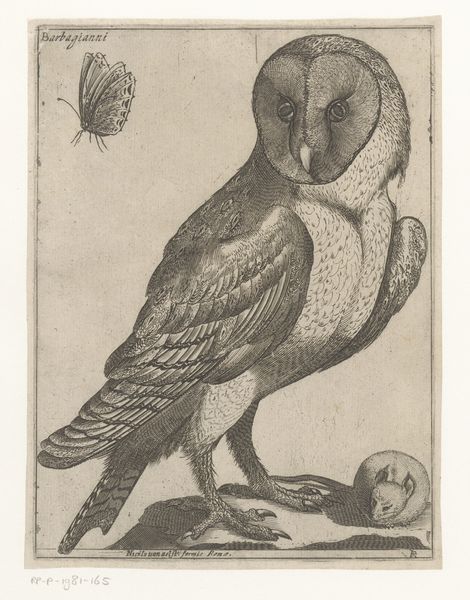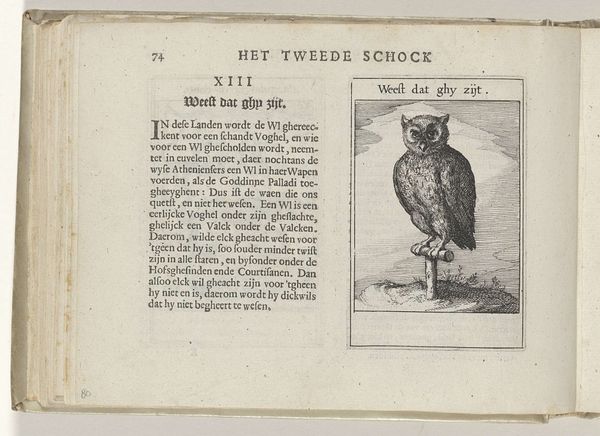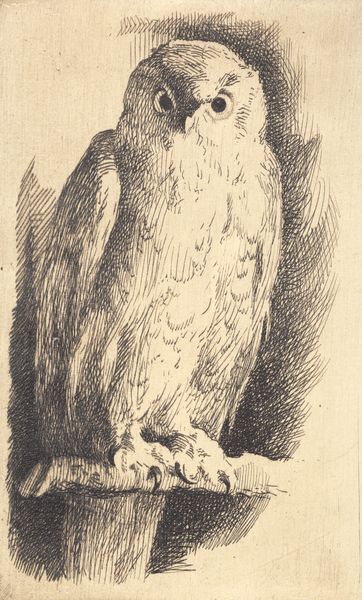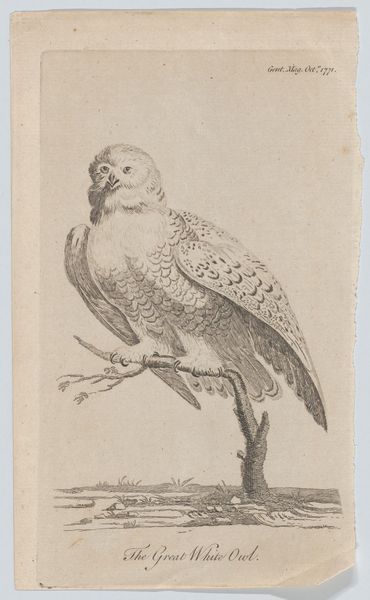
print, engraving
#
portrait
# print
#
figuration
#
line
#
history-painting
#
engraving
#
realism
Dimensions: 8 1/2 x 6 5/8 in. (21.59 x 16.83 cm) (plate)
Copyright: Public Domain
Curator: Before us is "L'Effraie," an engraving dating between 1770 and 1783, currently held at the Minneapolis Institute of Art. It’s after a study by Comte George-Louis Leclerc de Buffon, a leading enlightenment naturalist. Editor: It’s a very striking image. The composition is remarkably stark. A prominent owl, centrally located, looms over what appears to be a darkened, detailed cityscape, set against the backdrop of an intense night sky. Curator: The material of the print itself is essential here. Engraving was a highly reproducible medium, which helped disseminate Buffon's studies of the natural world. His focus was not just on artistic merit, but on broadly sharing knowledge and classifying the natural world through accessible visuals. This required labor; and reflects the economics of publishing and encyclopedic knowledge. Editor: Looking more closely, it seems the graphic quality stems from meticulous line work, creating tonal depth and texture. The composition balances areas of stark light with deeper, somber shading. I note also how the realism of the owl’s features contrasts somewhat with the symbolic elements like the gothic architecture. Curator: Precisely! This juxtaposition reflects Buffon's overall project. He presented his detailed engravings in volumes accessible to various craftsmen, including copperplate engravers. We must remember these engravers and printers as an important labour force in spreading awareness. Also notice how it isn't just a scientific illustration – the setting seems to convey an underlying cultural mood related to the enlightenment project and scientific discovery. Editor: You’re right. Focusing on these intrinsic compositional techniques lets one see the print as more than just a document of scientific classification. The dramatic contrast emphasizes the animal's majestic form. And how the light seems almost to originate from the owl itself, giving it a heightened, perhaps even symbolic, status. Curator: And that focus is the culmination of a social need to portray nature objectively, not just fantastically. Consider how prints democratized the ability for people to acquire and possess imagery that only aristocratic painters possessed. I see the engraving as representing labor in that it took intense and careful manual crafting, contrasting with, yet replicating, original source drawings by naturalists themselves. Editor: Considering it from a purely visual perspective has broadened my view and how an ostensibly documentary image has an intrinsic dramatic composition. The print certainly provokes considerations that extend beyond simply capturing avian form. Curator: Indeed, engaging with it critically enriches our comprehension of labor, skill and its influence during this intellectual and economic revolution.
Comments
No comments
Be the first to comment and join the conversation on the ultimate creative platform.

